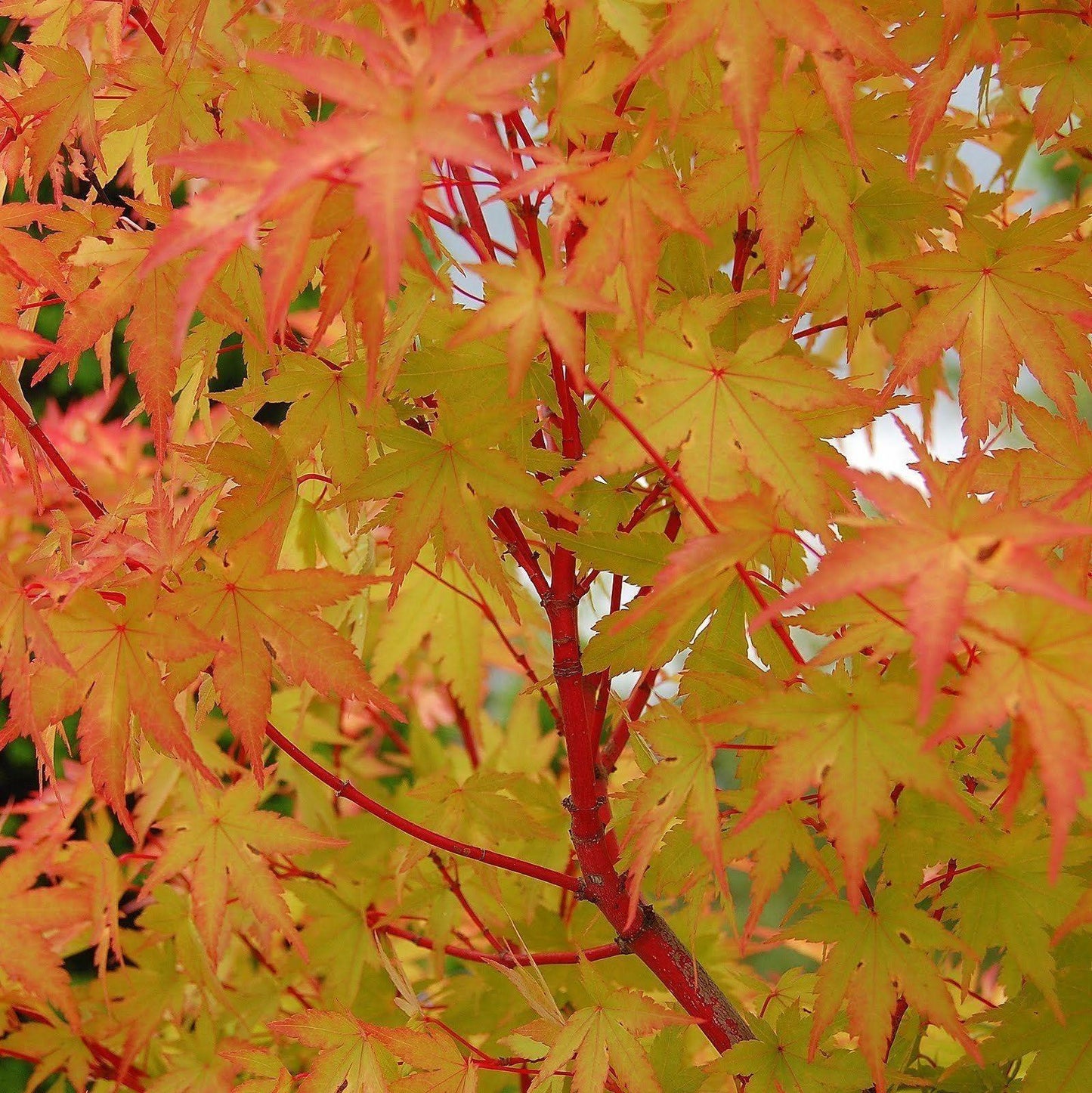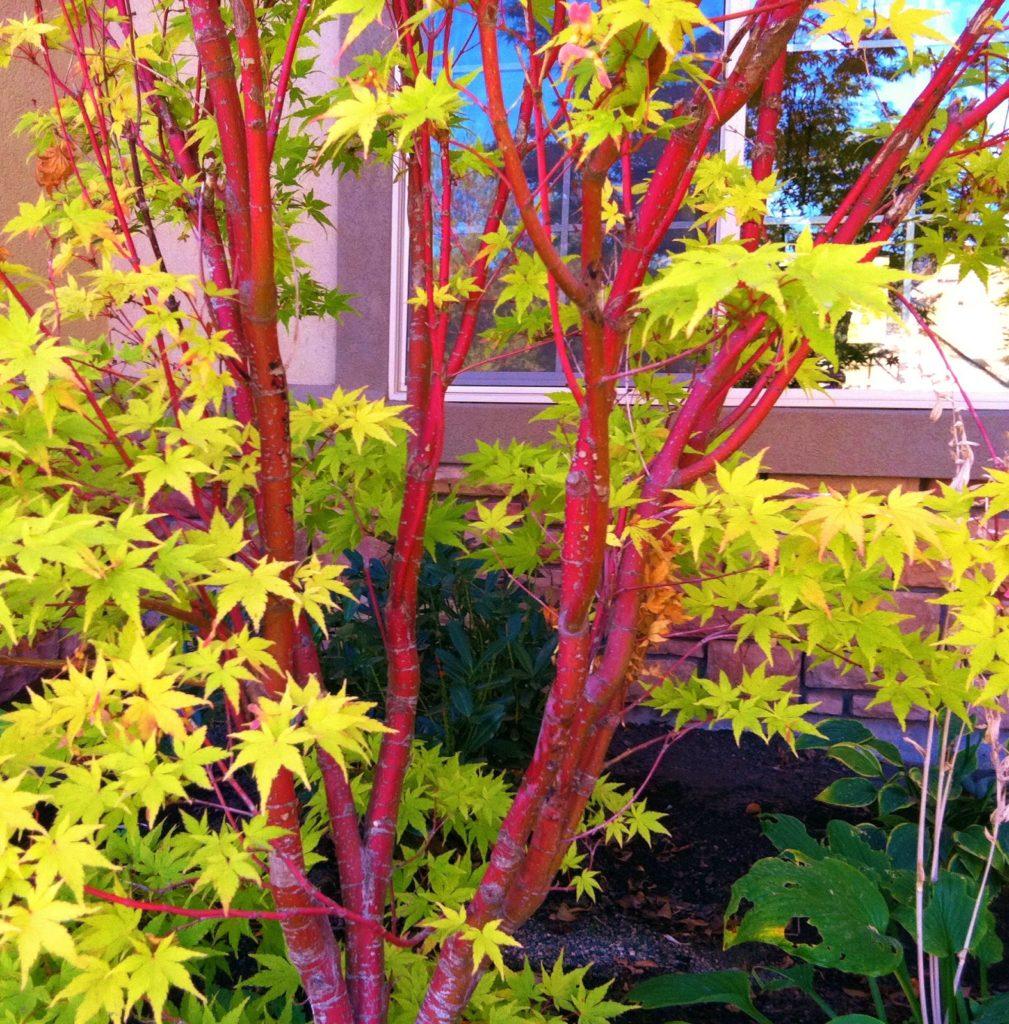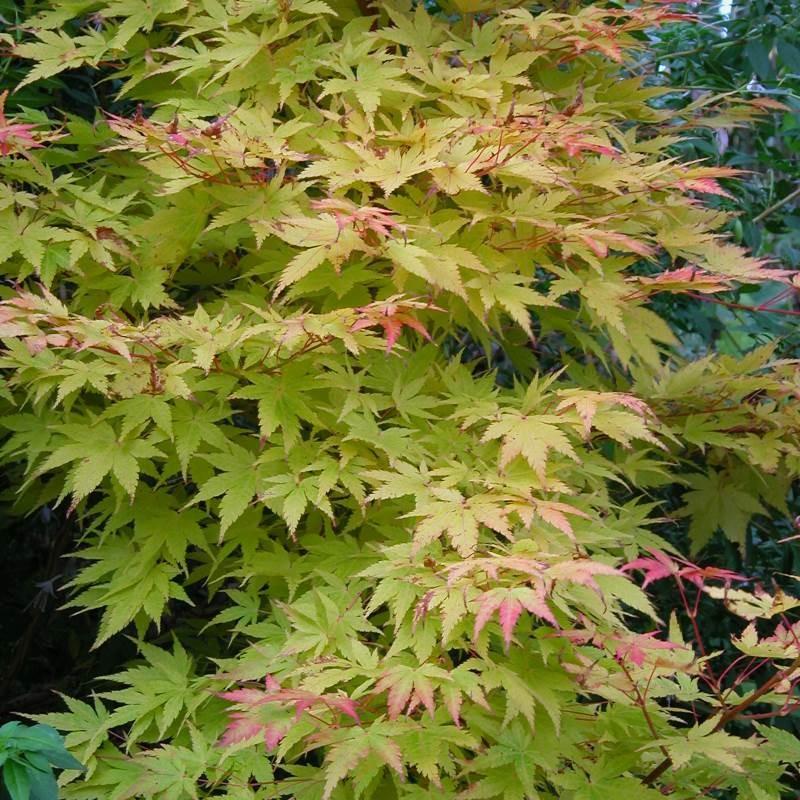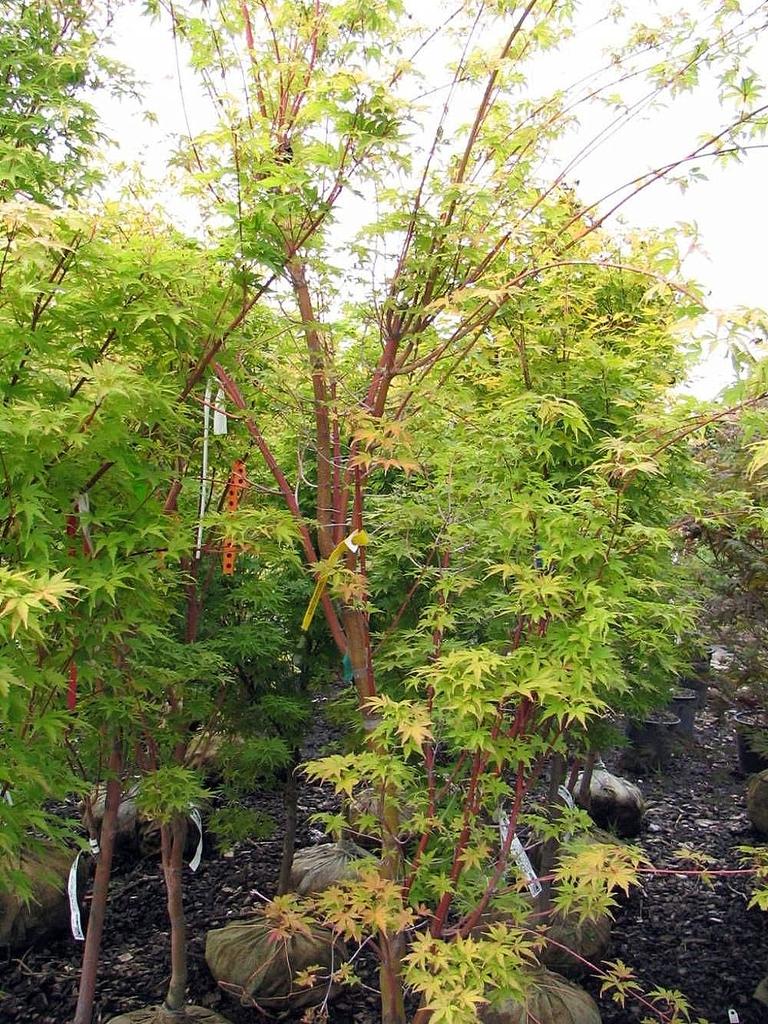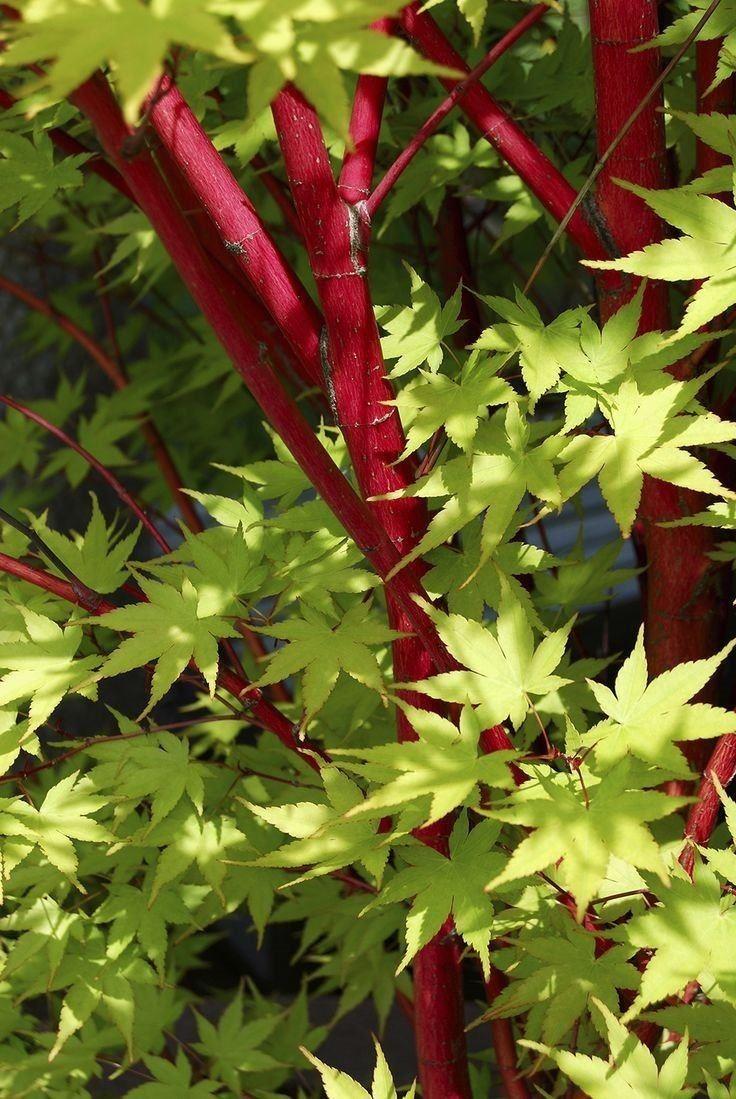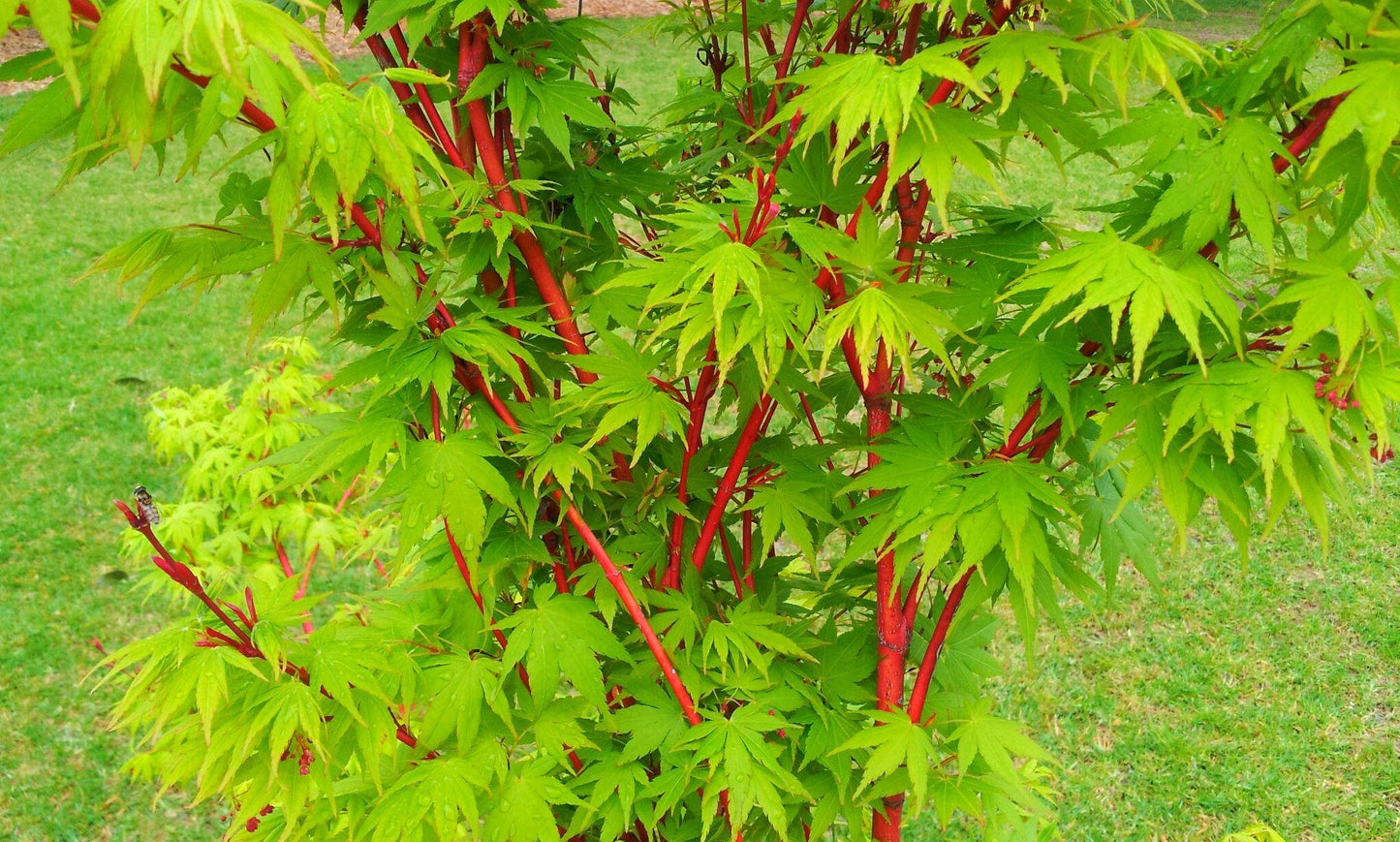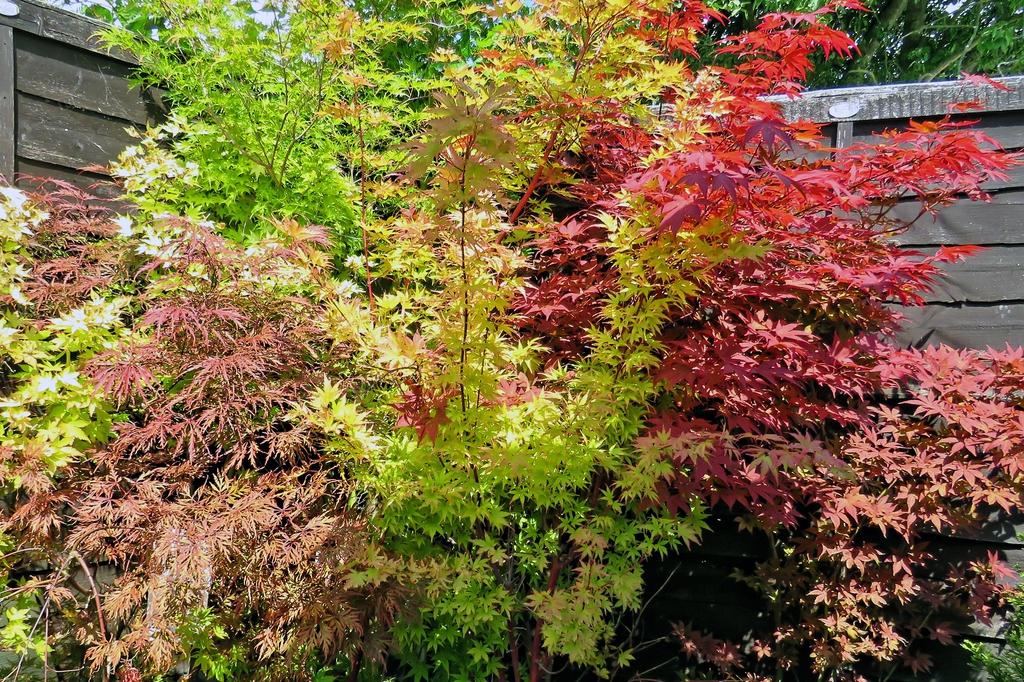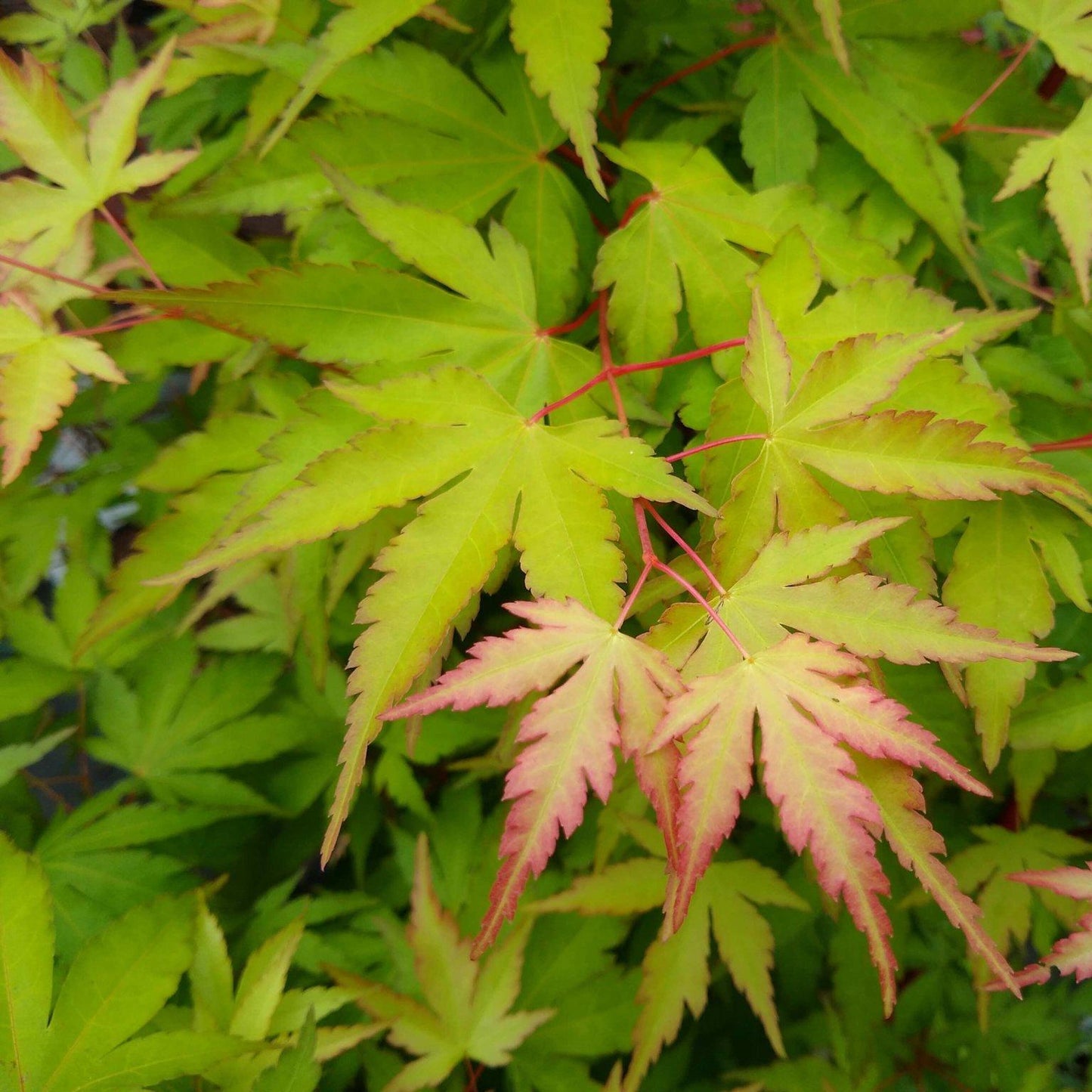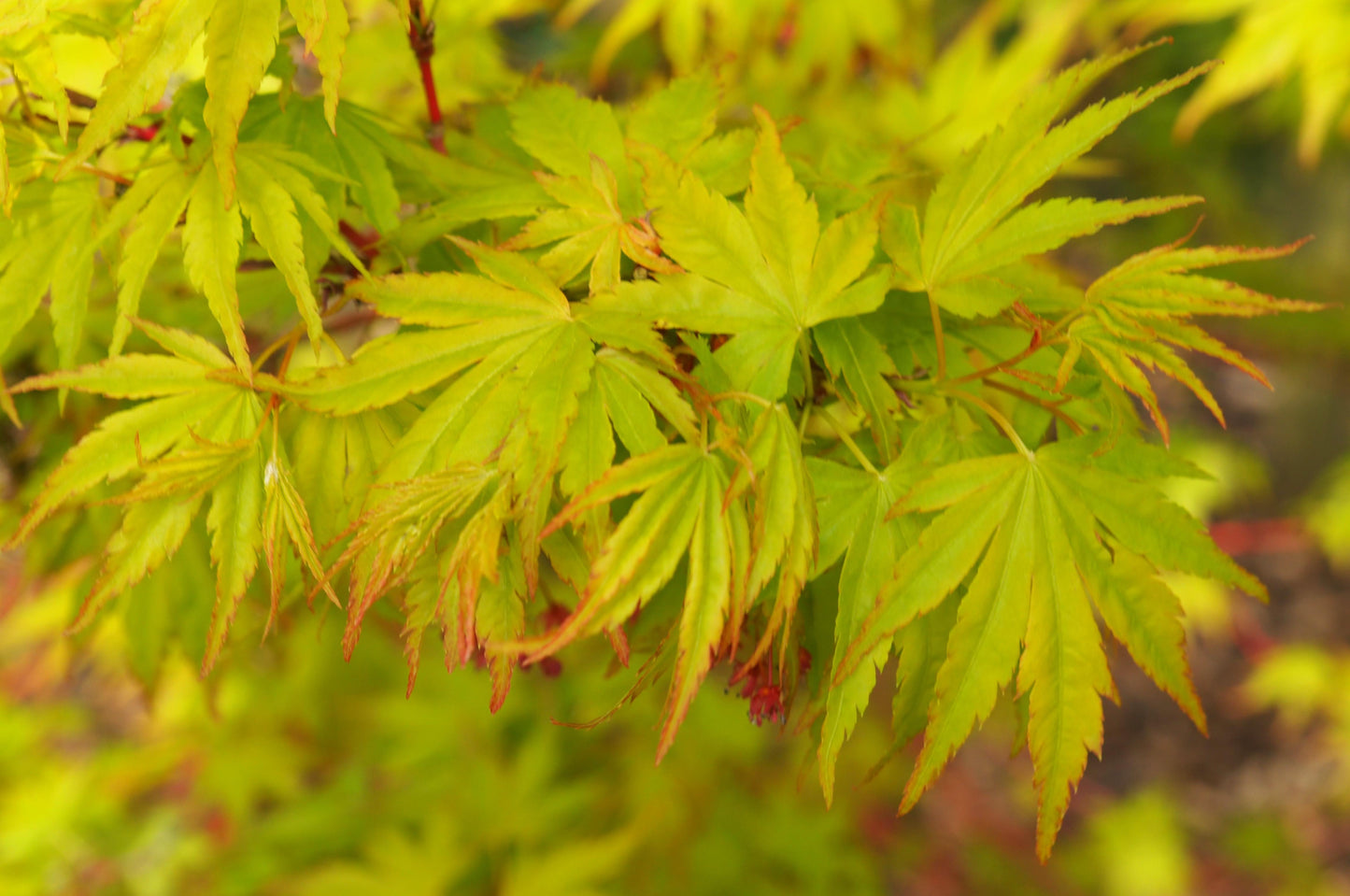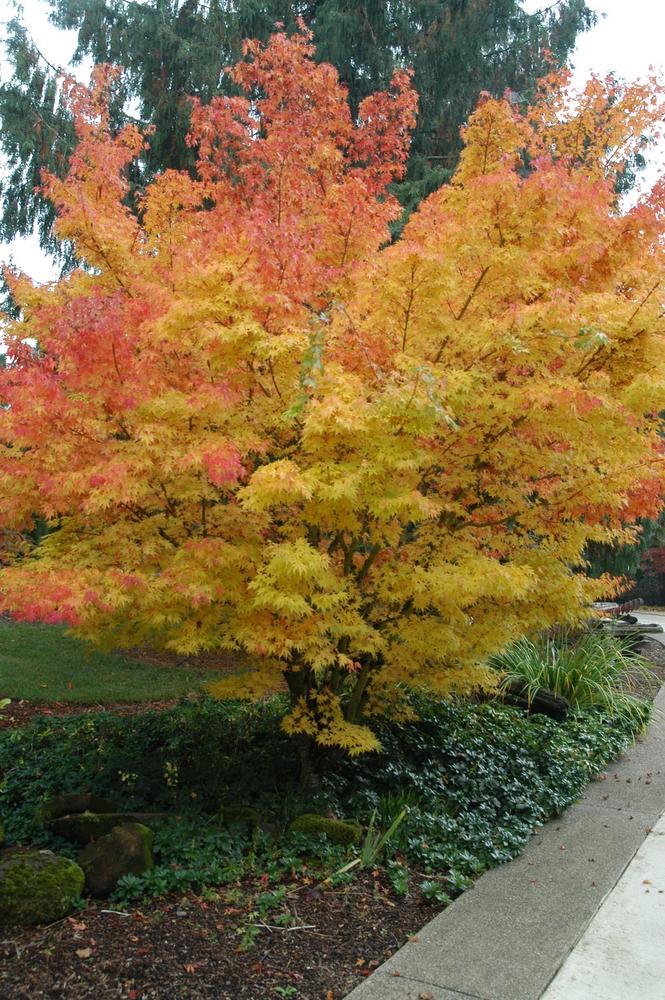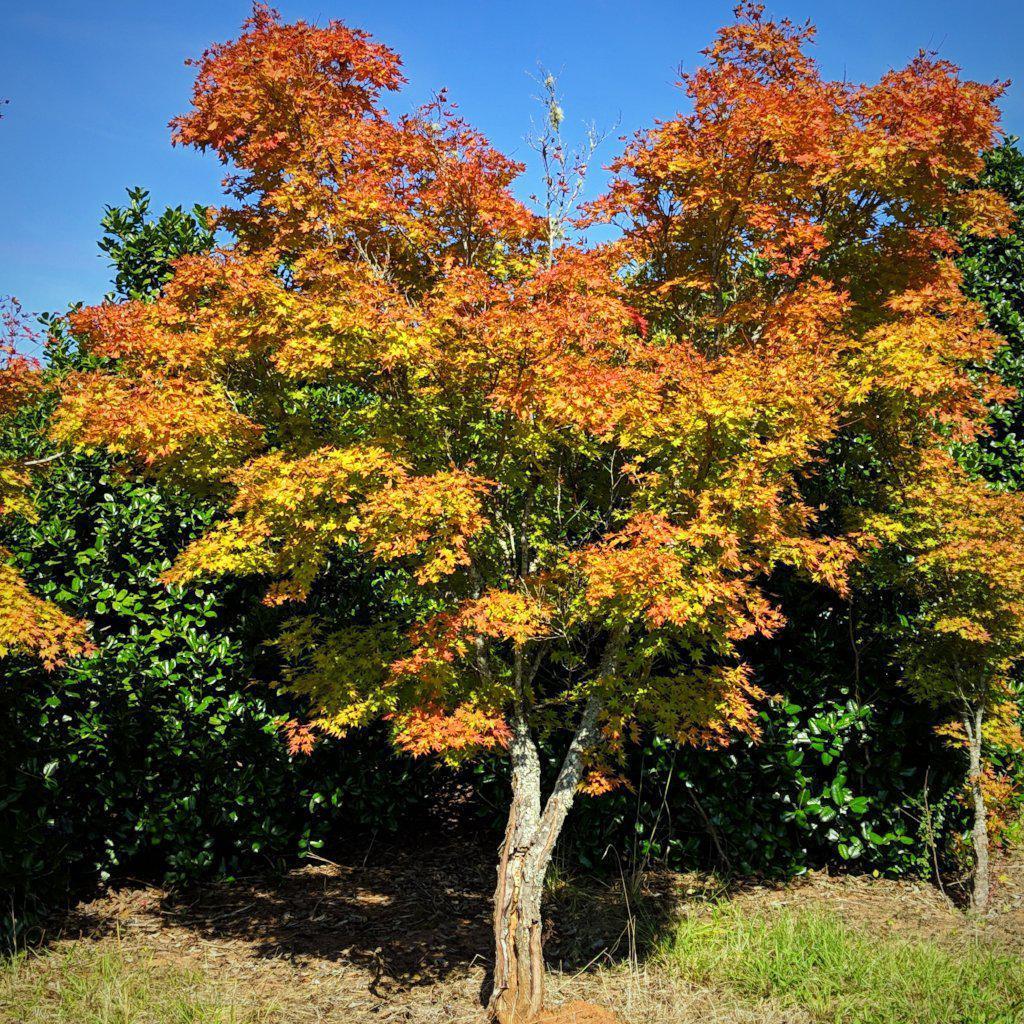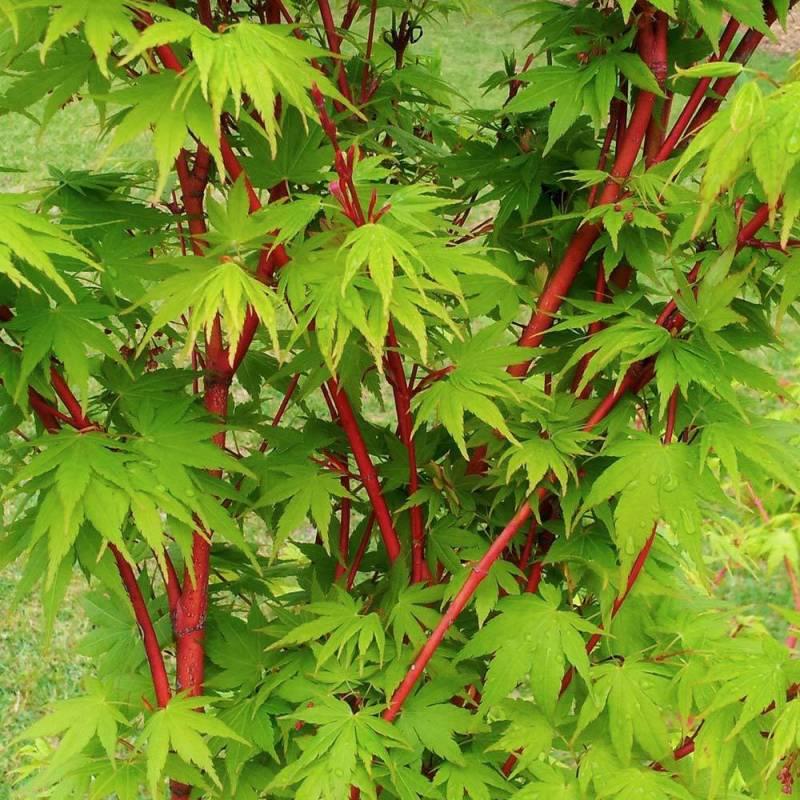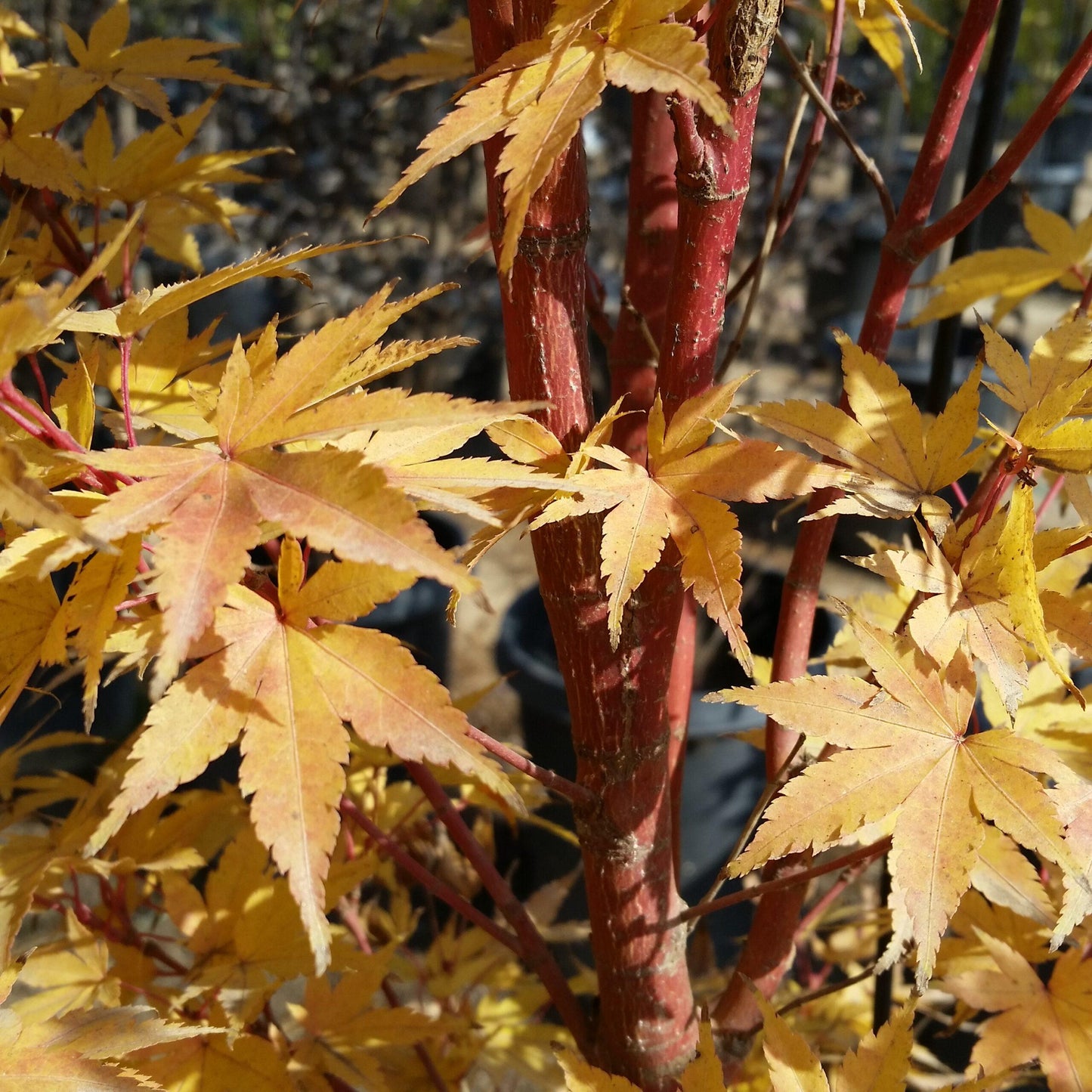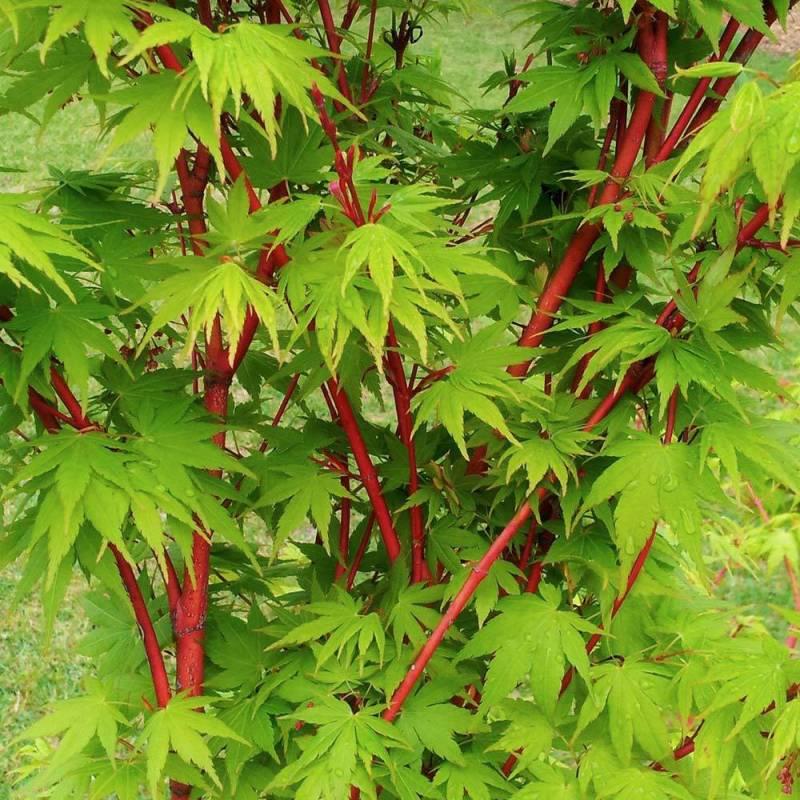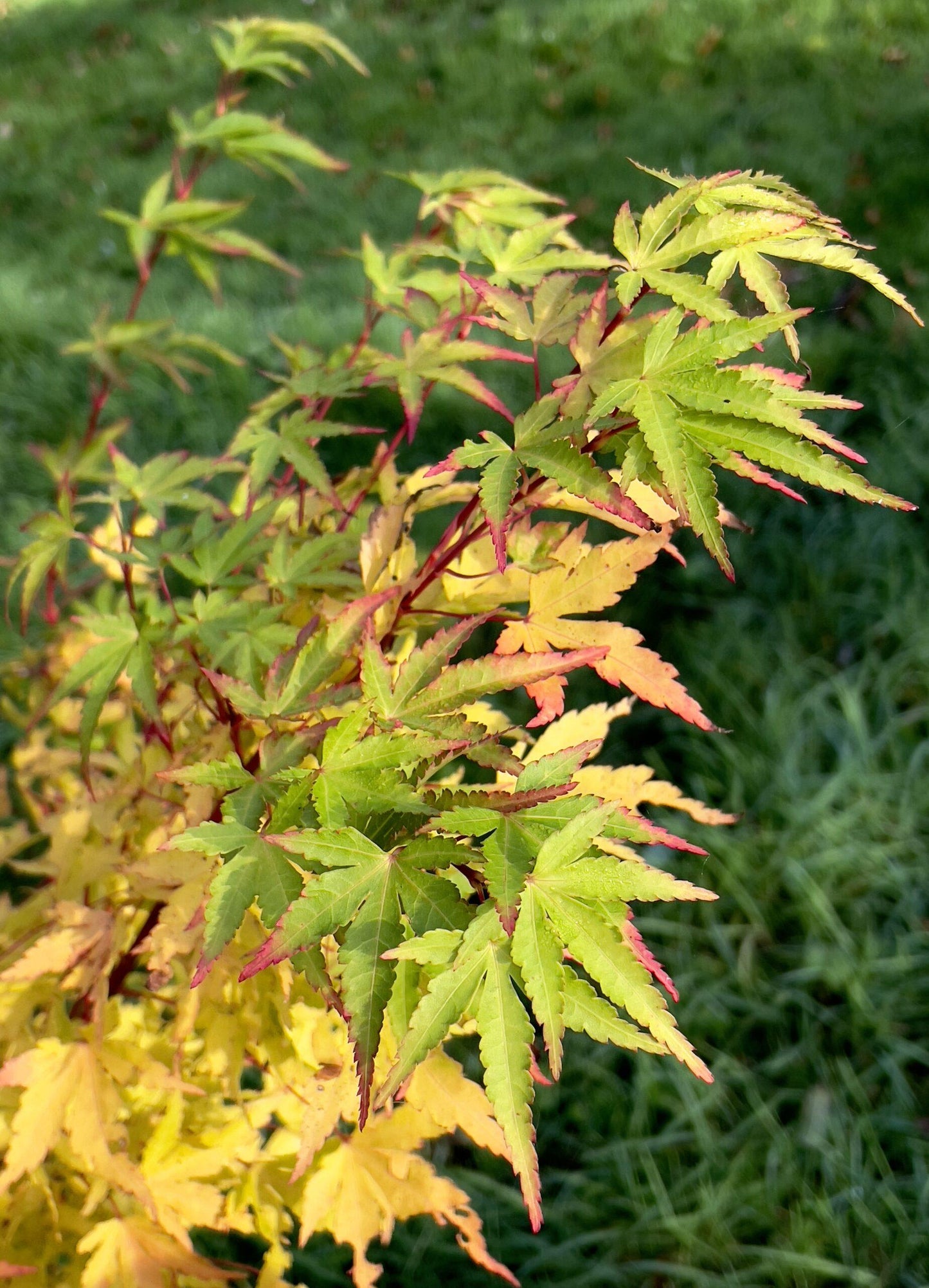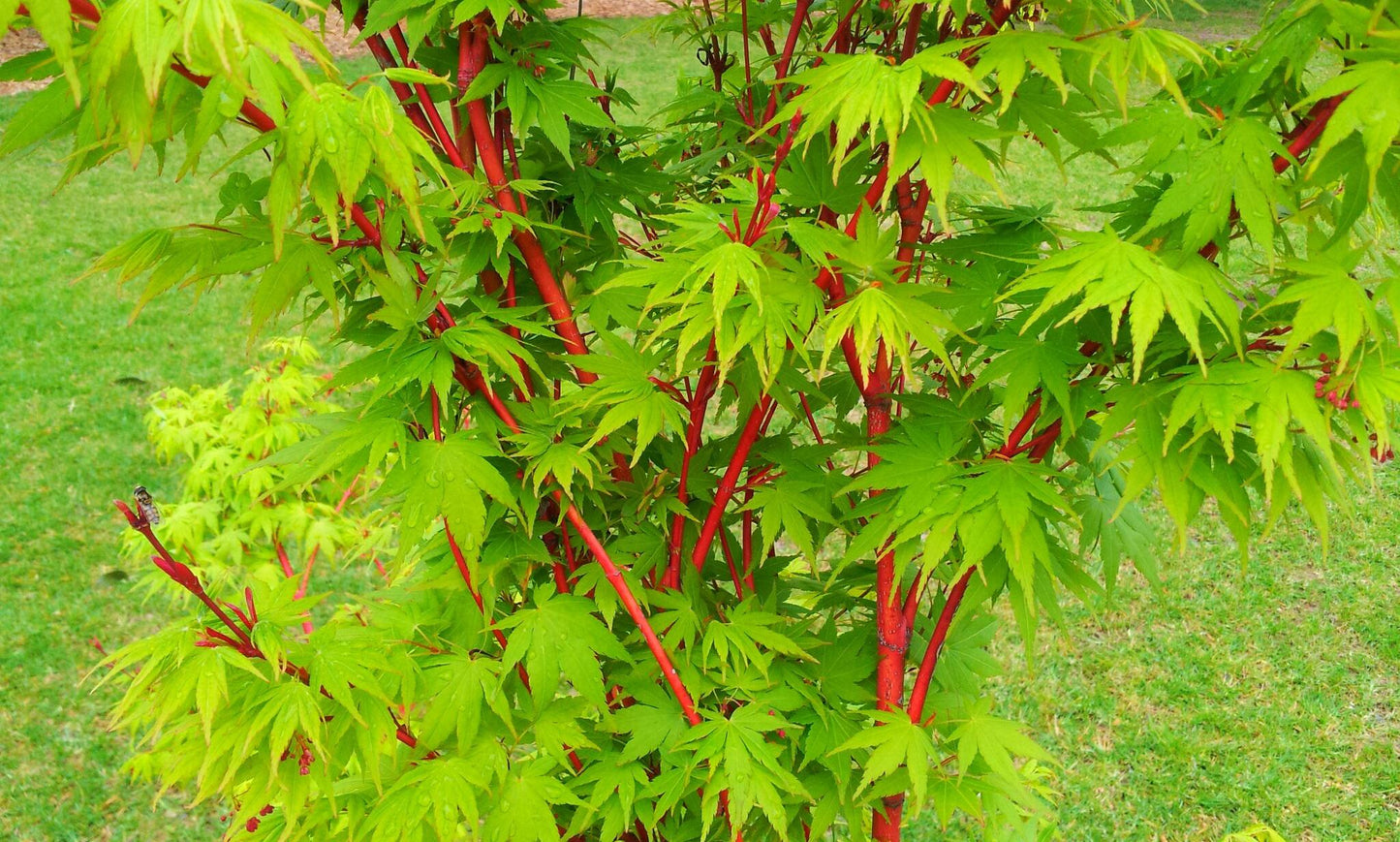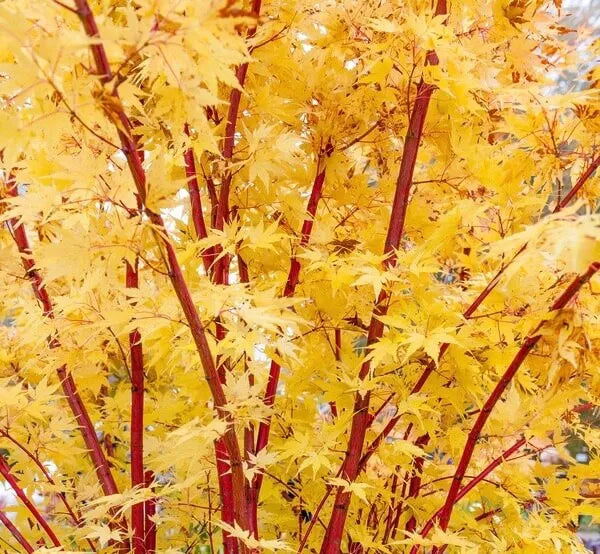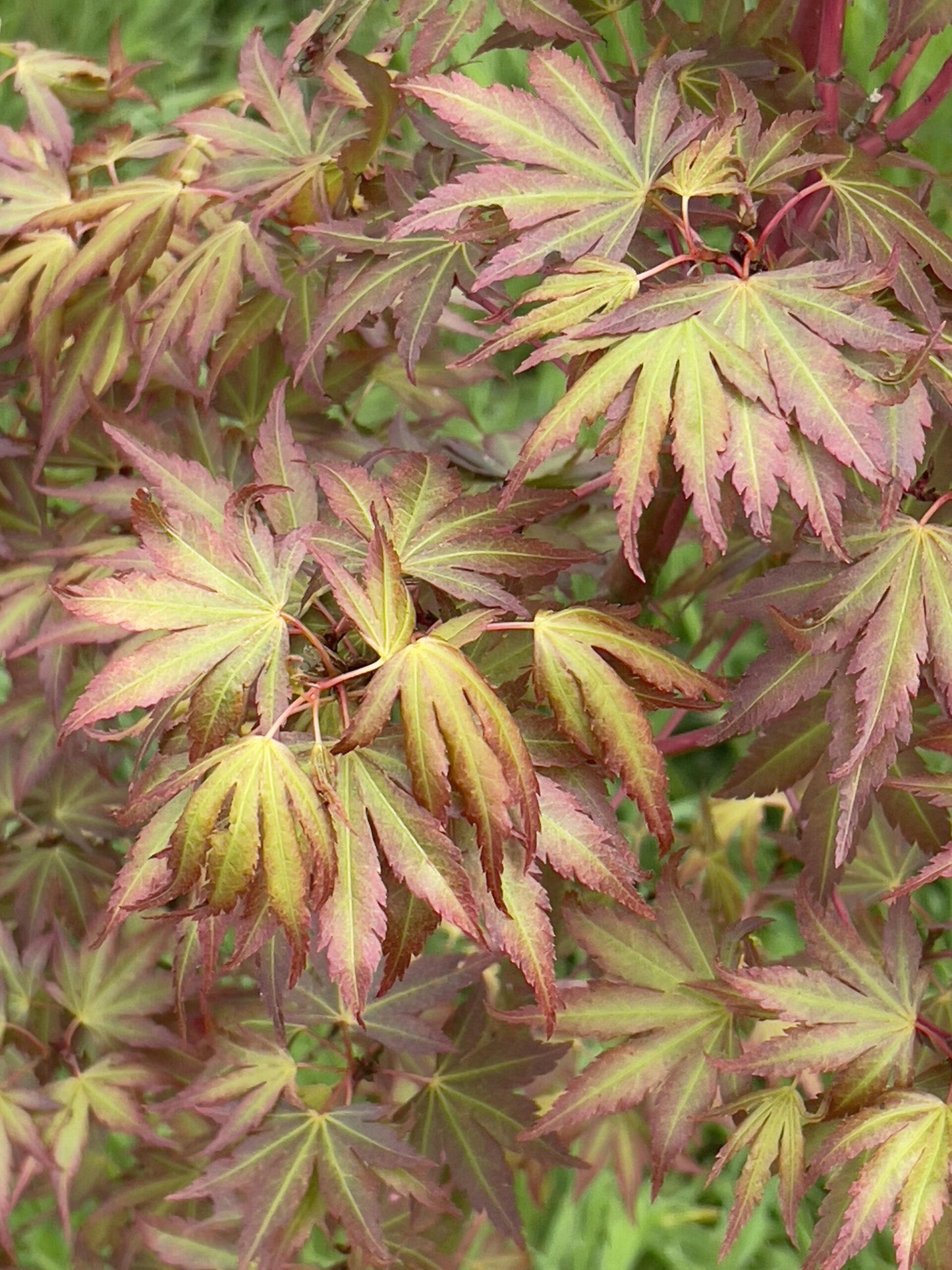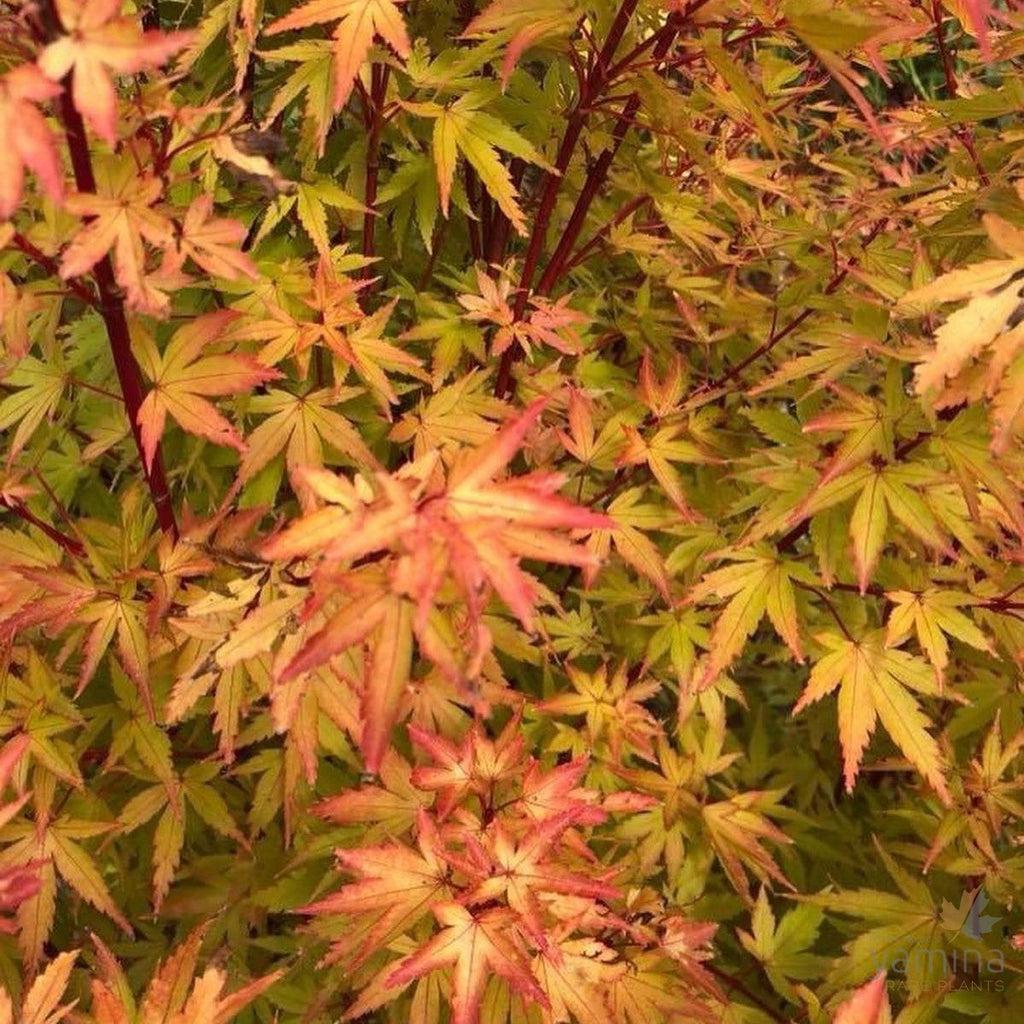1
/
of
21
RedCrocus Sango Kaku Japanese Maple-Coral-Red Bark for Gardens 25 Gallon
RedCrocus Sango Kaku Japanese Maple-Coral-Red Bark for Gardens 25 Gallon
Regular price
$2,700.00 USD
Regular price
$3,510.00 USD
Sale price
$2,700.00 USD
Unit price
/
per
Shipping calculated at checkout.
SKU:nto2361-redcrocus
Couldn't load pickup availability
Acer palmatum 'Sango Kaku'
Description
The Acer palmatum 'Sango Kaku', commonly known as the 'Sango Kaku' Japanese Maple, is renowned for its striking coral-red bark that provides vibrant color in the winter landscape. Its delicate, palmate leaves emerge a soft yellow-green in spring, turning a brilliant golden-yellow in the fall. This deciduous tree is a favorite for adding year-round interest to gardens.
Suggested Uses
'Sango Kaku' Japanese Maple is ideal for use as a specimen tree in small gardens, as a focal point in mixed borders, or for adding color to winter landscapes. It is also well-suited for bonsai and container gardening.
Plant Details
-
 Botanical Name: Acer palmatum 'Sango Kaku'
Botanical Name: Acer palmatum 'Sango Kaku' -
 Common Name: 'Sango Kaku' Japanese Maple
Common Name: 'Sango Kaku' Japanese Maple -
 Size & Growth: 15-25 feet tall and 15-20 feet wide
Size & Growth: 15-25 feet tall and 15-20 feet wide -
 Hardiness Zones: 5-8
Hardiness Zones: 5-8 -
 Foliage Type: Deciduous
Foliage Type: Deciduous -
 Bloom Time: Spring
Bloom Time: Spring -
 Growth Rate: Moderate
Growth Rate: Moderate -
 Light Requirements: Full sun to partial shade
Light Requirements: Full sun to partial shade -
 Attracts Pollinators: No
Attracts Pollinators: No -
 Indoor Friendly: No
Indoor Friendly: No -
 Container Friendly: Yes
Container Friendly: Yes -
 Deer Resistant: No
Deer Resistant: No -
 Pet Warning: Non-toxic
Pet Warning: Non-toxic -
 Fragrant: No
Fragrant: No -
 Cut Flower: No
Cut Flower: No -
 Grows Well With: Ferns, Hostas, and other shade-loving plants
Grows Well With: Ferns, Hostas, and other shade-loving plants
Care Tips
-
 Planting Instructions: Plant in well-drained soil, ensuring the root flare is at soil level.
Planting Instructions: Plant in well-drained soil, ensuring the root flare is at soil level. -
 Soil Moisture: Keep soil consistently moist but not waterlogged.
Soil Moisture: Keep soil consistently moist but not waterlogged. -
 Soil Type: Prefers acidic, well-drained soil.
Soil Type: Prefers acidic, well-drained soil. -
 Humidity: Prefers moderate humidity; protect from dry winds.
Humidity: Prefers moderate humidity; protect from dry winds. -
 Pruning Instructions: Prune in late winter to early spring to maintain shape and remove dead branches.
Pruning Instructions: Prune in late winter to early spring to maintain shape and remove dead branches. -
 Winter Care: Mulch base to protect roots in colder zones.
Winter Care: Mulch base to protect roots in colder zones. -
 Planting Depth: Plant at the same depth as in the nursery container.
Planting Depth: Plant at the same depth as in the nursery container. -
 Fertilization: Fertilize in early spring with a balanced, slow-release fertilizer.
Fertilization: Fertilize in early spring with a balanced, slow-release fertilizer. -
 Special Care: Protect from late spring frosts to avoid damage to new growth.
Special Care: Protect from late spring frosts to avoid damage to new growth.
Share
